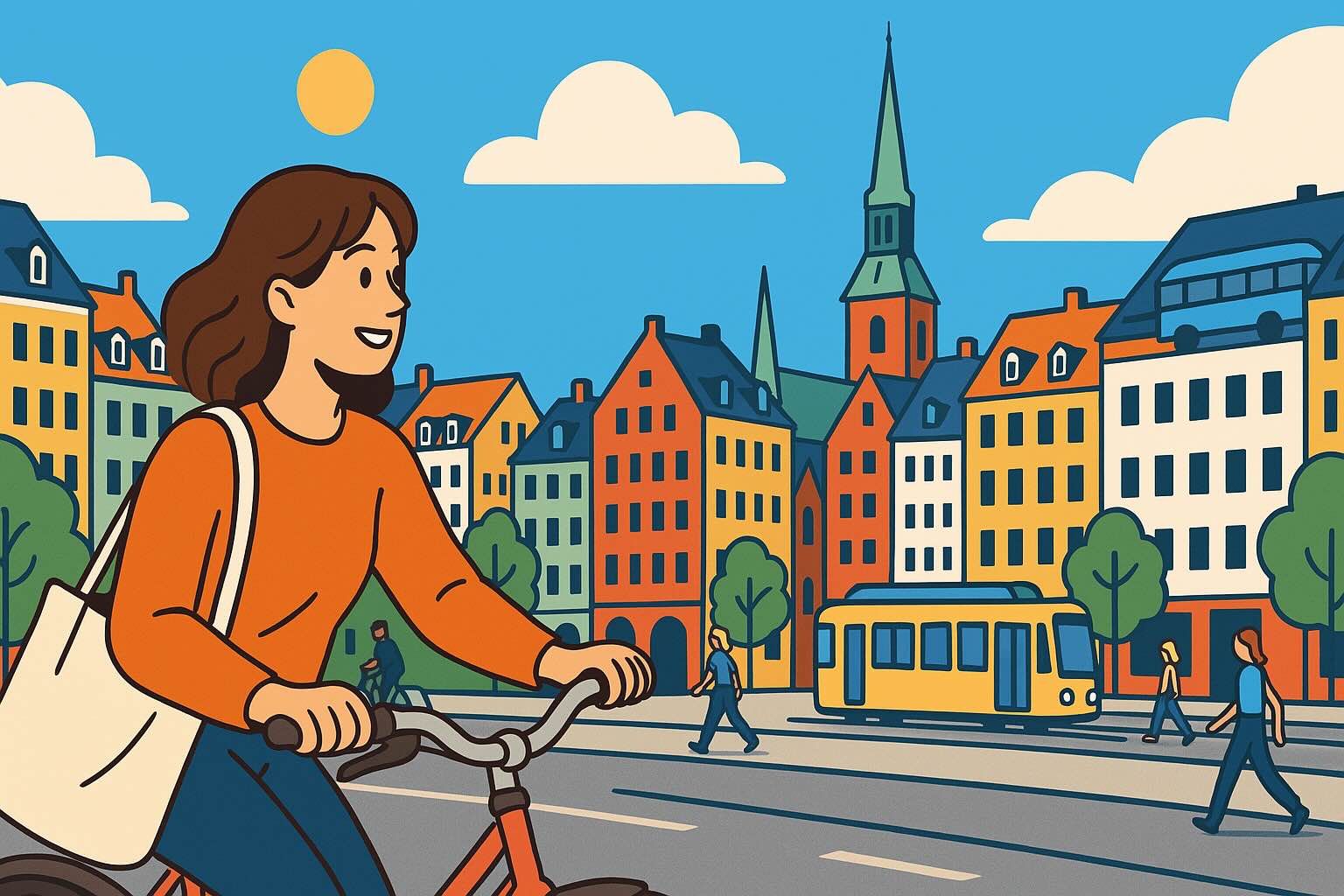
Living abroad is about freedom. New perspectives, new people—and sometimes, a new way of moving through the world.
For many expats, one of the biggest shifts is going car-free. Whether it’s about saving money, protecting the environment, or living a healthier, more connected lifestyle, more and more people are choosing cities where a car simply isn’t necessary.
Here’s a list of 20 cities around the world where you can live well without owning a car. These cities offer excellent public transport, walkability, safety, and access to everything you need.
Population: ~1.3 million
Why it works: Copenhagen is built for bikes. Over 60% of residents commute by bicycle daily. The city is flat, green, and equipped with one of the most efficient public transport systems in Europe. Trains, metros, and buses run on time and integrate seamlessly.
🔎 See how Copenhagen scores on the Best City Index →
Population: ~300,000
Why it works: This charming coastal city is small enough to walk everywhere, and its new light rail system makes it even easier. Aarhus is also a young city with a large student population and a strong cultural scene.
🔎 See how Aarhus scores on the Best City Index →
Population: 1.9 million
Why it works: Ranked as one of the most liveable cities in the world, Vienna offers exceptional public transport for a very low cost. Trams, buses, and metros are clean, fast, and frequent.
🔎 See how Vienna scores on the Best City Index →
Population: 540,000 (2.8 million metro area)
Why it works: Trams climbing the city’s hills are more than tourist attractions—they’re a vital part of the public transport system. Combined with frequent buses and an expanding metro, Lisbon is a walkable city full of charm.
🔎 See how Lisbon scores on the Best City Index →
Population: 37 million (metro area)
Why it works: Tokyo’s transport network is considered the most efficient in the world. Trains arrive every few minutes, and every neighbourhood is well-connected. You can access supermarkets, clinics, and restaurants within walking distance.
🔎 See how Tokyo scores on the Best City Index →
Population: ~900,000
Why it works: Amsterdam is practically designed for life without cars. It’s a bike-first city, and most destinations are within a 15-minute ride. The tram system adds comfort on rainy days.
🔎 See how Amsterdam scores on the Best City Index →
Population: 1.6 million
Why it works: Wide sidewalks, bike lanes, and one of Europe’s best metro systems make Barcelona easy to explore without a car. The city’s Mediterranean vibe is perfect for slow, pedestrian-friendly living.
🔎 See how Barcelona scores on the Best City Index →
Population: ~430,000
Why it works: Zurich combines the precision of Swiss engineering with a deep focus on liveability. Trams and trains cover every corner, and the city centre is compact and walkable.
🔎 See how Zurich scores on the Best City Index →
Population: 10 million
Why it works: Incredibly safe, fast, and clean, Seoul’s metro is a model of modern transport. Almost every corner of the city is reachable without a car, and tech-driven mobility options like e-scooters are widely available.
🔎 See how Seoul scores on the Best City Index →
Population: 11 million (metro area)
Why it works: Paris is investing heavily in cycling lanes and pedestrian zones. The metro covers the entire region, making car ownership unnecessary even in the suburbs.
🔎 See how Paris scores on the Best City Index →
Population: 1.7 million
Why it works: Walkable neighbourhoods and an expanding metro system make Montreal a strong choice for North America. The city also has a vibrant culture and multilingual population.
🔎 See how Montreal scores on the Best City Index →
Population: ~660,000
Why it works: Helsinki has one of the cleanest and most reliable transport networks in Europe. The city is compact, and you can combine walking, cycling, trams, and ferries with a single digital pass.
🔎 See how Helsinki scores on the Best City Index →
Population: ~975,000
Why it works: Stockholm’s archipelago can be explored via boats, buses, metros, and even cable cars. The city’s planning encourages public life and healthy commuting.
🔎 See how Stockholm scores on the Best City Index →
Population: 5 million
Why it works: Melbourne has the world’s largest tram network and a walkable grid structure. The inner suburbs are packed with cafés, coworking spaces, and parks—all accessible without a car.
🔎 See how Melbourne scores on the Best City Index →
Population: ~700,000
Why it works: Oslo has aggressively removed cars from the city centre in favour of pedestrian and bike zones. Electric public transport and ferries make it easy to get around sustainably.
🔎 See how Oslo scores on the Best City Index →
Population: 1.5 million
Why it works: Efficient metro and tram systems, clean air, and green spaces make Munich ideal for those who value quality of life without a car.
🔎 See how Munich scores on the Best City Index →
Population: 640,000
Why it works: Portland is one of the most walkable and bike-friendly cities in the United States, with a solid light rail and streetcar network.
🔎 See how Portland scores on the Best City Index →
Population: ~530,000
Why it works: A compact historical centre, excellent metro and tram connections, and a growing cycling culture make Lyon an underrated car-free gem.
🔎 See how Lyon scores on the Best City Index →
Living without a car doesn’t mean giving something up. It means gaining:
More connection to your neighbourhood
Less stress
Lower costs
More time
Better health
And for many, a deeper feeling of freedom
If you're an expat planning your next move, consider cities that are designed around people—not traffic.
Author
Sammy Salmela is a contributor to BestCityIndex with expertise in urban development and global city trends.
Stay updated with our latest insights and city rankings.

Introduction:The aroma of aged wheels, bubbling fondue, and freshly baked bread for cheese lovers, Europe is a true paradise. Here are five cities where cheese...

Date: 5 August 2025Source: AFP, Reuters, Local Weather AuthoritiesReading Time: 3 minutesIntroductionIn just one week, Asia has faced two stark climate...

Moving to Europe: Pros and Cons by Country for Work, Retirement, Education & Lifestyle Part 1.Moving from the United States to Europe is an exciting...




